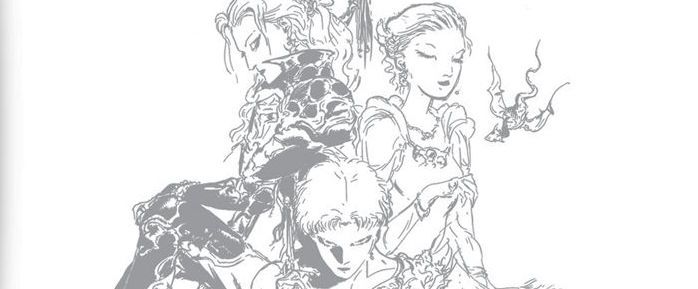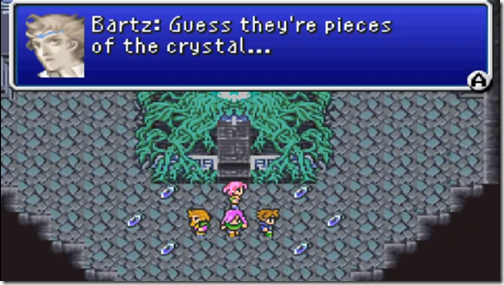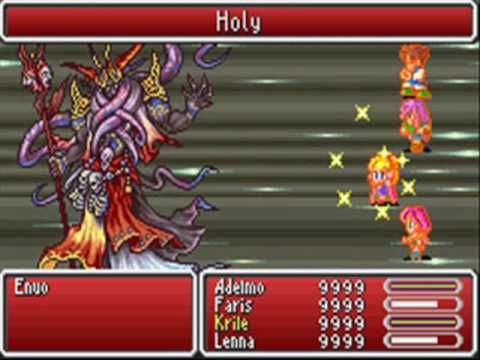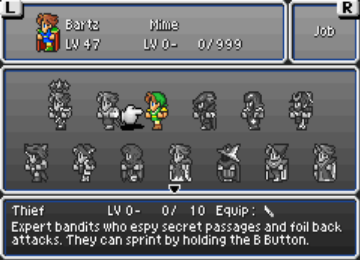Though today you can stuff stereoscopic 3D and console-quality graphics into your backpack, that once seemed inconceivable. Handhelds have evolved quickly, but we shouldn’t forget the games that made them great in the first place. Though these games lack raw processing muscle, they have a power all their own.
Between fourteen numbered entries, sequels, spin offs and remakes, the number of games that carry the Final Fantasy name are probably only surpassed by zombie games. Things were not always this way, which became apparent to everyone in 1997 when US gamers saw the release of Final Fantasy VII, the follow up to the 1994 Final Fantasy III, which should be common knowledge by now to really be Final Fantasy VI. The select titles from the franchise that did see an American release enjoyed critical and commercial success, but it was not until its PlayStation debut that the series became a household name. The popularity of Final Fantasy VII and VIII led to localization of the earlier titles, granting audiences outside of Japan a chance to enjoy an official version of the games with an English translation.
Final Fantasy V was originally released in 1992 for the Super Famicon and did not make it stateside until 1999 in Final Fantasy Anthology for the PlayStation. This version was the first opportunity for US gamers to experience an official English language version of this title, but excessively slow loading times hampered the experience. 2006 is when this title made its way to the Game Boy Advance, complete with a brand new English translation and some minor enhancements. These enhancements include the addition of four extra job classes, a bonus dungeon, an extra boss battle and faster loading times. The music quality is better on the PlayStation release, but in all other regards the GBA port is the better version. Oddly enough, this is the first Final Fantasy to get a direct sequel and a movie, which was 1994's anime simply called Final Fantasy, which was localized for the US in 1998 renamed Final Fantasy: Legend of the Crystals. In other words, the movie sequel was available to American audiences before the game was.
The story begins with Bartz (Butz for those who played the unofficial fan translated version) encountering a meteorite that recently struck his world. He meets up with Lenna, the princess of Tycoon, and Galuf, and old man who is suffering from amnesia. Soon after they join up with pirate captain Faris, and make their way to the Wind Shrine due to Lenna's urging them to see what happened with her father who went there to investigate the decline in the wind. This trip to the Wind Shrine reveals that the Crystal of Wind has shattered, which is bad, but the crystal shards react to the party members who are apparently the chosen Warriors of Light, which is good. The four elemental crystals, Earth, Wind, Fire, and Water, control the elements and make the world inhabitable. The crystals also help keep a great evil named Exdeath sealed, and their destruction would lead to his return, which would be like frozen yogurt toppings containing potassium benzoate, which is bad.
Introducing a game in an established series so many years after its initial release is somewhat of a risk. Things that were groundbreaking or even just par for the course in 1992 definitely antiquated by 1999, and this is even more apparent in 2006. Going with the weaknesses first, if Square was not going to release every Final Fantasy in the States, they were smart with the ones they chose to release. Final Fantasy IV and VI, or II and III as they were called on the SNES in the 1990's, both blow Final Fantasy V out of the water in regards to character development and plot. Both even numbered games have more characters and the party changes far more frequently. There is some changes in the party throughout the course of Final Fantasy V, but nowhere near what happens in the other games. In addition to a larger number of characters, the other games' characters were more interesting and more thoroughly developed. The main villain, Exdeath, has not only one of the lamest and generic names in the series he does not have the Darth Vader inspired presence of Golbez or the Jokeresque cruelty and malice of Kefka.
The strong point of gameplay is the job system. The ability to switch a character's class with the job system, such as fighter, black mage, thief, was introduced in Final Fantasy III (the real Final Fantasy III that saw a US release on the DS, not the SNES game that is really VI) and improved in Final Fantasy V. This system utilizes 26 different jobs, originally 22 but that is part of why the GBA version is the best version. When a character has a job equipped they gain a separate set of points in battle to level up their proficiency with the job that unlocks new abilities. Abilities unlocked with each job can be equipped with other jobs, so a magic user can have the steal command available, or a knight can use summoning magic. Some combinations work better than others, giving a white mage the ability to fight with a staff in each hand is not the smartest allocation of abilities, but who am I to dictate how someone wants to play the game. There is an astronomical number of ability combinations that can be made, and figuring out how to customize the party into an unbeatable death squad or using bizarre choices to make the game even more challenging is entirely up to the player.
There are other fine points to this installment as well. In addition to the traditional Final Fantasy means of travel such as airship and chocobo, this one features a dragon pulled pirate ship and a dragon that serves as a personal steed for a portion of the game. Like the other SNES games, and I am being intentionally vague to avoid spoilers in the off chance someone reading this hasn't played all three games, this one does include multiple game worlds to explore as the story progresses. It should be noted that this is the first Final Fantasy title where female playable characters outnumber their male counterparts. The graphics are maybe ten percent than Final Fantasy IV and have only the slightest hints in some of the enemy designs of the large graphical jump that will come with Final Fantasy VI.
Final Fantasy V is by no means the best Final Fantasy. It is also not the worst, falling somewhere in the middle. The plot is not bad, it is just not as well developed as some of the other entries in the franchise. The job system has an incredible amount of depth to it that offers a huge amount of character customization, especially for a 1992 game. The game does show its age and features a high random battle encounter rate which can become tedious. Despite not being as great as some of the other Final Fantasy titles, it is still a solid entry in the franchise and even with its imperfections, is still enjoyable over two decades after its initial release and a good reason to dust off the old GBA.
Get more Pocket Power. Click here to view every Pocket Power so far and prepare for a pocket-sized stroll down memory lane.




